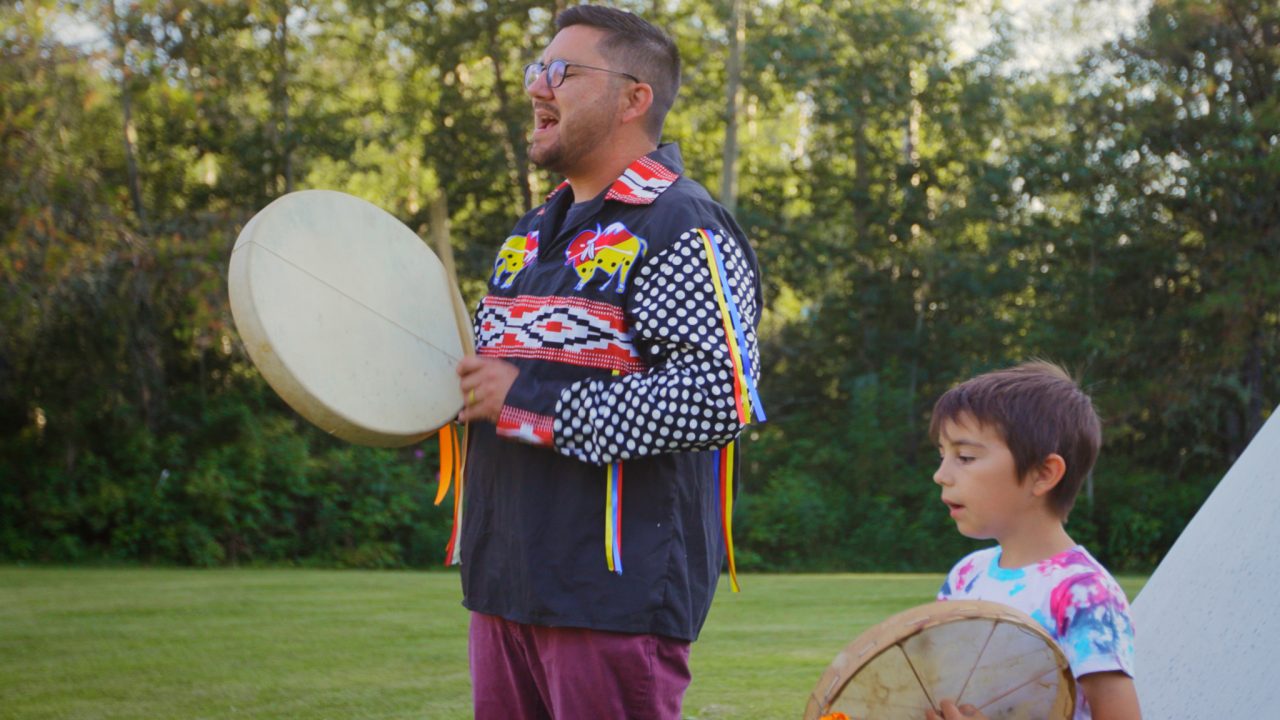
Four Indigenous Filmmakers Share Their Knowledge This Season
Four Indigenous Filmmakers Share Their Knowledge This Season
What is the definition of “sharing”? When the National Film Board of Canada asked me to write a blog post about their Season of Sharing offer, I wasn’t too sure where to start. The best place to begin, I thought, was to first watch three of the offer’s amazing short films, made by three very talented Indigenous directors. I didn’t have to watch the fourth short as I’m the filmmaker behind that one, and I’ve seen it enough to know every frame on the screen.
So after I watched the films, I wanted the best opening to really grab readers’ attention. I mean, I could have gone with the cliché of a dictionary definition like this one:
Share verb
‘Sher
- To partake of, use, experience, occupy, or enjoy with others
- To have in common
That’s how Webster’s defines sharing. It’s a simple yet effective definition, right? But what does it mean for other cultures and other parts of the world? For Indigenous people, not just in Canada but across the world, it’s a shared belief that our history is taught through storytelling. We have shared our stories through many mediums, from songs to food. If you ever sit with an auntie at the kitchen table and she shares her knowledge on how to make bannock, there’s a good chance she’ll tell you that she learned from her kokum or etsu. We are natural storytellers, and you see that in these four beautiful films.

Let’s start with the common thread they all share: music. Evan’s Drum and Heartbeat of a Nation are about educating our youth through music. Not just songs, but the history and the culture of those who carry the drum. Arctic Song is unique in that it uses many mediums to convey its narrative. Traditional songs, actual storytelling, art and film are all used to tell its four different stories. It’s a fitting short film for this blog post on the idea of sharing stories. Finally, in Nalujuk Night it’s songs that allow the Nalujuit to pass over you with candy and determine whether you were good all year long or not.
With that being said, what sets these films apart? Both Evan’s Drum and Heartbeat of a Nation both portray a young child building a drum. However, there’s something unique about each film.
In Evan’s Drum, director Ossie Michelin captures what it truly took for a community to share the history of Inuit qilaut. This young Inuk child, Evan, had many teachers, including his mom and a Knowledge Keeper. We hear the story of how his mother picked up the drum and helped revive it for the community. It started with a fairly large group of drummers, which over time began to shrink. Evan is engrossed in what he’s learning, even if at times he’s enjoying his childhood and acting wild. At the end of the day, the knowledge, culture and history of his people are being shared with him. It is the hope of his community that one day he will share his knowledge with the next generation. But for now he’s just a young boy who’s happy to share what he was taught with his family, and to share his drum with his sibling. The closing images of the film are of Evan and his family playing on the beach. To me, that is truly where sharing and learning our cultures begins. Our families, whether born into or chosen, teach us early on about who we are and what makes us special.
Evan’s Drum, Ossie Michelin, provided by the National Film Board of Canada
When talking about my original pitch for Heartbeat of a Nation, I have to mention how I got to where the story is now. The simple answer is COVID. It was my blessing in disguise as the story started to get bigger and bigger in my mind, because I was able to simplify it by just taking a camera and filming my brother craft a caribou hide drum. Honestly, I would have filmed it in his backyard in the middle of Edmonton, but then society began to open up again. We decided we’d go back to my traditional homelands in the boreal forest, to my community of Chipewyan Prairie Dene First Nation. It was just meant to be my brother Brant, but his youngest child came along for the ride, and that’s how August came to be a part of the documentary. It went from this “making of” documentary to my brother sharing his knowledge of the drum with his youngest child. August looks on, oftentimes with a bored expression but interested nonetheless, taking in the traditional stories and knowledge shared. In the end, the two sing a traditional song that has been shared with us by another community, and which we now share with our own community. It is the most powerful moment in the film, and that’s not just coming from a place of bias. Hearing August’s voice get progressively louder as the song goes on carries so much weight—it is both their voice and the voice of a community.
Heartbeat of a Nation, Eric Janvier, provided by the National Film Board of Canada
In talking about voice, we must discuss the hauntingly beautiful voice of the singer in Arctic Song, directed by Germaine Arnattaujuq, Neil Christopher and Louise Flaherty. When I hit “play,” I did not know what to expect, but when that voice began to sing, I was all in. Each story presented a different sense of natural knowledge and Inuit folklore and how both can co-exist in our world, much like how Light and Dark exist in this world and the Raven and Hare exist together. The stories that are being taught to us through the film tell many legends of how our world has come to be. Mountains stand tall, resembling towering giants, and the stars in the sky could be animals giving chase. It’s a way for people to look at these things and wonder if the stories are true or not. That in itself is the greatest asset of any form of storytelling. You want to keep the audience wondering long after the story is over. Isn’t that why we get into filmmaking in the first place? To tell our truth, and to allow the audience to think about what we shared with them. That is what storytelling is, and that is why Arctic Song excels in that field.
Arctic Song, Germaine Arnattaujuq, Neil Christopher & Louise Flaherty, provided by the National Film Board of Canada
Showing Nalujuk Night alongside a story like Arctic Song is not only fitting, but it also makes for a great double feature. Directed by Inuk filmmaker Jennie Williams, the film introduces us to a world hidden by the dark, a world known only to those who celebrate the holiday known as Nalujuk Night. I’d be lying if I said I knew all about this tradition, because I don’t. Where I’m from and where these traditions live are separated by only a few hundred kilometres. However, this story is so uniquely local that it could only work in the North. These creatures called Nalujuit emerge on the ice from the North and descend on the village, to give gifts to kids if they’ve been nice—or a nice swat to the backside if they’ve been naughty. Doesn’t that remind us of someone else? I could definitely go into a long tangent about the history of Christmas and how the way we celebrate it today derives from many different cultures, but that would take us over the word count for this piece. What I enjoy about this film is that it shows how the community comes together to share knowledge. Much in the same way that Evan’s Drum involved his community, children of all ages are taught not to fear the Nalujuit unless they’ve been bad. Those who have been good can be rewarded with candy if they sing the Nalujuit a song; most likely a traditional song that they’ve been taught and that tells a story.
Nalujuk Night, Jennie Williams, provided by the National Film Board of Canada
These four films showcase what it means to share knowledge, and how we teach stories. We’ve all come together in our shared medium of filmmaking to pass on knowledge and tradition in many unique ways. Each filmmaker has captured beautifully how we carry on this knowledge—and that is through storytelling. In short, these films truly fit the bill for the Season of Sharing.



